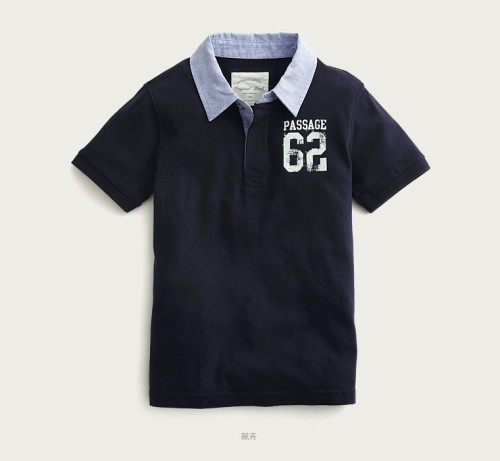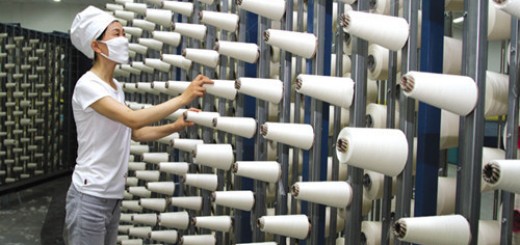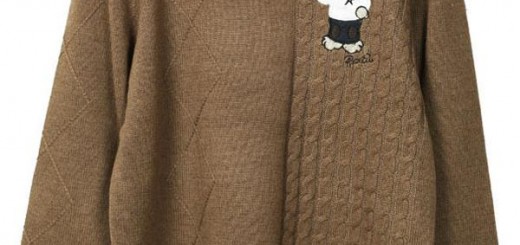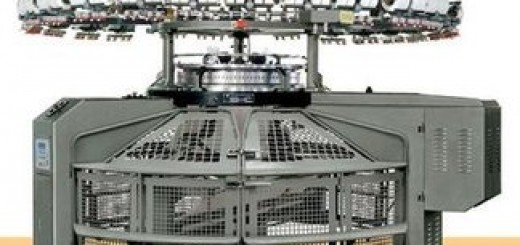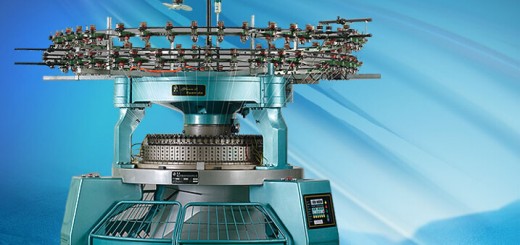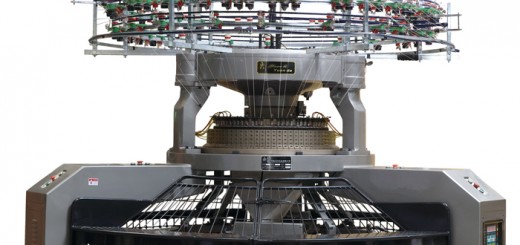Most of knitted clothing is made of cotton and chemical fiber cotton yarn, having softness, elasticity, breathability, sweat-absorption and comfort, such as sportswear and underwear. As clothing, knitted clothing has other features, besides the same features as woven clothing.
Production processes of knitted clothing include spinning, knitting, perching, tailoring, sewing, ironing and inspection.
1. Spinning
Spinning is used to wind the cotton yarns into package bobbin having structure and specification, suitable for knitting production. During spinning, some defects existing in yarns should be eliminated. Meanwhile, to make yarns have even tension, necessary auxiliary processes should be carried out on cotton yarns, such as waxing and oiling, improving knitting properties of yarns, production efficiency and quality of products.
2. Knitting
Knitting refers to the process that knitting machines knit the yarns into coils, then, the coils interloop each other and form into fabrics. That is also the basic difference between knitted clothing and woven clothing.
Knitting can be classified into weft knitting and warp knitting. Most of fabrics used for knitted clothing are weft knitted fabrics. Weft knitting refers to that one or several yarns are fed into needles of knitting machine in weft. The yarns are bended into loops in sequence and interloped to from weft knitted fabrics. The machine used to manufacture the knitted fabrics is called as weft knitting machine. Weft knitting has better adaptation to categories and liner density of processed yarns. It also has various categories of knitted fabrics. Due to various categories, weft knitted fabrics cannot only be knitted into gray fabrics used for underwear and outwear having different tissues, but also can be knitted into singleton or part of forming products, meanwhile, the process of weft knitting and machine structure are also quite simple, easy for operation. Weft knitting machine also has higher production efficiency. Therefore, weft knitting also has higher proportion in knitting industry. Weft knitting machine also has various categories. In general, weft knitting machine is distinguished based on quantity of needle bed, forms of needle and categories of needle. Warp knitting is that one or several groups of parallel yarns are arranged on the needle respectively, then, knitted along the longitudinal. The machine used to knit the fabrics is called as warp knitting machine. Generally, warp knitted fabrics has poorer laddering ravelling and elongation than weft knitted fabrics. It has better stability of structure and shape and also has wide application. Besides used for manufacturing fabrics used for clothing, weft knitting machine also can be used for manufacturing mosquito net, curtain, decorative fabrics of lace and medical textiles. Warp knitting machine also can be distinguished based on type of needle bed and knitted needle.
3. Perching
The quality of gray fabrics has direct influence on quality and yield of products. So, before cutting, quantity, sizes, density, batch number and liner density of gray fabrics must be checked to meet requirement, based on charger sheet of fabrics used for cutting. During perching, gray fabrics should be inspected one by one according to standards. All of defects having impacts on quality of products such as color tone, missed stitches, holes and oil contamination should be marked and recorded.
4. Tailoring
The processes of tailoring knitted clothing contain fracturing, borrowing, tailoring and packing.
Borrowing is an important key for improving quality of products and saving materials. During fracturing, defects on gray fabrics should be moved to cutting parts or seams as far as possible.
Knitted fabrics should be tailored along the warp direction. Nested patterns are generally used for tailoring. Flat set, each set, bushing, joint set and cutting seam set are commonly used.
The following matters should be noticed during tailoring knitted fabrics
a. Folding marks and printed margin cannot be used for conspicuous parts of clothing.
b. Taper hole marks are not allowed to be used in case of impacting appearance of clothing.
5. Sewing
Sewing machines are mainly used for current sewing technology in Chinese knitting industry, including medium and high speed lockstitch sewing machine, medium and high speed overedger and flat seaming machine.
Due to knitted fabrics interloped by loops, edge of cut pieces may fall off or disperse easily. So, the edge of cut pieces should be overseamed firstly, then, sewed by lockstitch sewing machine. Lockstitch sewing machine and overedger are the two kinds of sewing machines used for sewing knitted clothing. Several tips should be noticed during sewing.
Seaming stitch
For knitted fabrics having longitudinal and lateral elasticity and disadvantage that edge loops easily fall of and disperse. Seaming stitch should meet the following requirements when sewing knitted clothing:
a. Seaming stitch should have elasticity and strength adapt to knitted fabrics.
b. The stitch should prevent loops of knitted fabrics from falling off and dispersing.
c. The density of stitch should be controlled properly. For example, stitch density of lockstitch sewing should be controlled at 9~10 stitches per 2cm. Stitch density of overedger should be 6~7 stitches per 2cm. Stitch density of lockstitch sewing machine used for thin knitted fabrics should be 10~11 stitches per 2cm.
Suture
Purified cotton knitted fabrics should use 9.8tex×4 or 7.4tex×3 purified cotton and polyester cotton blended yarns. Chemical fiber knitted fabrics should use 7.8tex×2 stretch nylon yarns and 5tex×6 nylon yarns. Suture should meet the following requirements for quality:
a. Cotton yarns used for sewing machine should adopt combed cotton, having higher strength and uniformity.
b. Suture should have elasticity, in case of breaking caused by bending or extruding of yarns during sewing.
c. Suture should have softness.
d. Suture should be uniform and smooth, reducing resistance and friction inside trunking or pinholes, in case of breaking, uneven tension or other defects.
Stitch needle
Needle used on sewing machine is also called as stitch needle or frame needle. To realize ideal cooperation between stitch needle and sewing materials or suture, proper stitch needle should be chosen.
6. Ironing
Through ironing, knitted clothing can have smooth appearance and accurate dimension. During ironing, liner plate is inserted into clothing so that the product can maintain its shape and dimension. The dimension of liner plate should be larger than clothing, in case of too small dimension after retraction. In general, the temperature of ironing should be controlled at 180℃~200℃ which is safer and the clothing is not easily overpressed or coked.
7. Inspection
Inspection is a comprehensive inspection of products before leaving factory, including appearance quality and inherent quality. Appearance inspection contains dimensional tolerance, appearance defects and fastness of seaming stitch. Inherent quality contains weight of unit area, color fastness and shrinkage.
